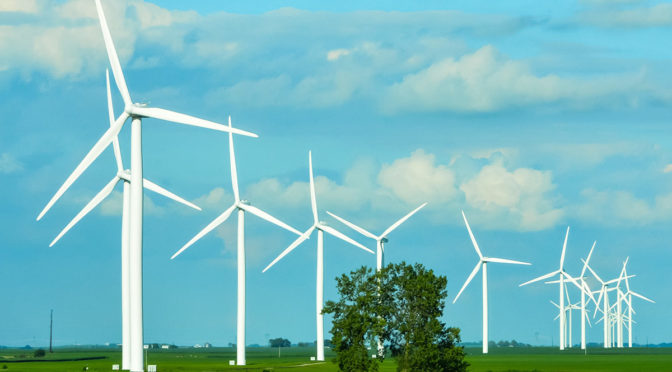Two Harvard researchers published a paper on wind power that drew a rapid flow of reactions from the press. A widely expressed interpretation of the paper in media articles is that the researchers had shown that wind turbines somehow cause climate change.
That is not what the authors say. It is not what they imply.
“Climate Impacts of Windpower,” by Dr. David Keith and Dr. Lee Miller, is a scientific paper, and it was not written for casual reading. Partly because of this, wrong impressions are easily formed from it — and, unfortunately, there are writers for popular publications who do that. Some of them, I suspect, may do that knowing that they are misrepresenting the facts. (A more readable and accurate article on the paper is in the Harvard Gazette.)
The authors of the paper explicitly contrast reversible changes in local climate that wind turbines can cause by mixing up the lowest region of the atmosphere with the cumulative and persistent effect of burning fossil fuels. In fact, this contrast is the first of the caveats they mention at the conclusion of their article, which says, “Fundamentally different mechanisms cause warmer temperatures from climate change compared with wind power.”
I am not suggesting that the authors should be let off the hook just because their writing has been misinterpreted. Their science has been criticized, and I think for good reason. For one thing, their model looked at a set of conditions that are not even remotely like anything that could happen. In the paper, they consider the local climatic effect on the continental United States if the country got 100% of its electricity from wind turbines packed into the Midwest. I have not seen any author take the position that we get all of our energy from wind power, let alone have all of it in the Midwest.
They surely had their reasons to do the model as they did. They must have wanted to make a case that was as clearly stated and comprehensible as possible. A model getting 40% or so of our electricity from wind power, along with a similar amount of solar, a large amount of hydropower, and other renewable sources would not have been merely hard to model. It would have been very difficult to comprehend the results. I think they could have been clearer about their reasons for choosing the model they did.
They conclude that the surface of the United States would be 0.24° C warmer, on average, if we operated according to the model they used for their study. I believe, however, that this is not sufficiently contrasted with whatever the alternatives are. What would the effect be if we continue with the current generating mix? Certainly that would be more than 2.4° C. What would it be if we used the proportions suggested by Mark Z. Jacobson? The results would be very different. And what would be the result of distributing the wind power throughout the country? The authors actually say it would be different, but they do not quantify how.
One of the caveats in the paper is, “Our comparison metric ignores many possible benefits and drawbacks of the climate impacts caused by wind power deployment.” The items listed do not include the benefits to human health of reduction in fossil fuel pollutants in the atmosphere. Nor does it include economic benefits arising from reducing the effects of pollution on agriculture. Nor does it include the reduction in costs for electricity, with power purchase agreements from wind power currently averaging only 2¢ per kilowatt-hour, the least expensive source of power we have in many if not most regions.
I believe this paper was not intended to move us to abandon wind power as we move to renewable energy, despite the fact that some people are certainly using it to make that claim. It is intended to alert scientists to the fact that we have good reasons to give careful consideration to the energy mix that we use in the future. It does not suggest excluding wind power from that mix.
I have seen many reports on this paper. Most of them do not refer to the the first sentence of the conclusion section. It is, “Wind beats fossil fuels under any reasonable measure of long-term environmental impacts per unit of energy generated.”
George Harvey A retired computer engineer, George Harvey researches and writes on energy and climate change, maintains a daily blog (geoharvey.com), and has a weekly hour-long TV show, Energy Week with George Harvey and Tom Finnell. In addition to those found at CleanTechnica, many of his articles can be found at greenenergytimes.org.
cleantechnica.com

